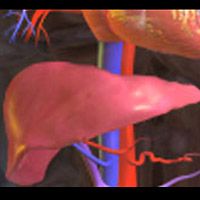Article
Clinical Characteristics and Management of Hyponatremia
Hyponatremia is frequently seen in patients with hepatic impairment and portal hypertension, and is associated with wide range of severe complications and comorbidities. Pharmacologic treatment with vasopressin receptor antagonists offer management options beyond standard therapy.
Hyponatremia is frequently seen in patients with hepatic impairment and portal hypertension, and is associated with wide range of severe complications and comorbidities. Pharmacologic treatment with vasopressin receptor antagonists offer management options beyond standard therapy.

Noting that hyponatremia “is common in patients with cirrhosis and portal hypertension and is characterized by excessive renal retention of water relative to sodium as a result of reduced solute-free water clearance,” the authors of “Hyponatremia in Cirrhosis and End-stage Liver Disease: Treatment with the Vasopressin v(2)-receptor Antagonist Tolvaptan,” published in Digestive Diseases and Sciences, reviewed several recent clinical studies that looked at the use of tolvaptan in the treatment of hypervolemic and euvolemic hyponatremia.
Hyponatremia may be present in “as many as half of patients with cirrhosis and portal hypertension.” In one study, the Cirrhotic Ascites Patient Population Survey (CAPPS), researchers studied 997 patients with cirrhosis and ascites in the inpatient and outpatients settings. They reported that 57% of inpatients and 40% of outpatients had hyponatremia, with nearly half of patients having serum sodium levels ≤ 135 mEq/L (21% of patients had serum levels of ≤130 mEq/L; 7% had levels of ≤125 mEq/L or lower). In this population, hyponatremia was associated with “severe ascites, large fluid accumulation rate, requirement for frequent large-volume paracentesis, and impaired renal function.” Patients with serum sodium < 130 mEq had the highest frequency of complications.
Hyponatremia is associated with a range of symptoms, including “headache, nausea, vomiting, anorexia, muscle cramps, lethargy, restlessness, irritability, and disorientation.” Aditional symptoms, which may present following a rapid decline in serum sodium levels, include “seizures, permanent brain damage, coma, brain stem herniation, respiratory arrest, and death.” The clinical presentation of hyponatremia is affected by several factors, including “the rate, extent, and overall timing of serum sodium decreases.”
There are several approaches to treating this condition, based on several factors. Management of acute hyponatremia (hyponatremia that develops within 48 hours or less) often involves administration of a hypertonic saline infusion, though clinicians should be aware of increased risk of ascites and edema. When treating patients who have developed chronic hyponatremia, it is recommended that clinicians correct the patient’s serum sodium levels in a more controlled manner, to reduce the risk of osmotic demyelination.
Another treatment options is the use of a vasopressin receptor antagonist. Tolvaptan, an oral, selective vasopressin V2-receptor antagonist, is currently indicated for treatment of clinically significant hypervolemic and euvolemic hyponatremia, as well as less-severe (but still symptomatic) hyponatremia that is resistant to correction by fluid restriction. The Study of Ascending Levels of Tolvaptan in Hyponatremia (SALT-1 and SALT-2) trials involved 448 patients who were randomized to tolvaptan or placebo plus standard therapy. Tolvaptan doses were titrated up to 30 mg/day or 60 mg/day during the first four days, as needed. Among this cohort, 27% had cirrhosis, 31 % had heart failure, and 42% had syndrome of inappropriate secretion of antidiuretic hormone (SIADH). Researchers reported that treatment with tolvaptan “resulted in a significantly greater increase in serum sodium at both time points (day 4 and 30) in both studies,” with fewer tolvaptan patients requiring fluid restriction compared to patients treated with placebo. The researchers also reported “A significantly greater increase in serum sodium was observed with tolvaptan treatment as early as 8 h after the first dose.”
During a follow-up study (the SALTWATER study), more than 100 patients who had previously received tolvaptan or placebo in the SALT trials “were treated with tolvaptan after having returned to standard care for at least 7 days. Average serum sodium levels in these patients increased to approximately the same levels as those observed with tolvaptan treatment in the SALT trials and were maintained for at least 1 year.”
Based on these and other results, the authors concluded that “The selective oral vasopressin V2-receptor antagonist tolvaptan acts to increase free water excretion and is effective in resolving hyponatremia in patients with cirrhosis and in others with hypervolemic or euvolemic hyponatremia. Tolvaptan and other vasopressin antagonists have the potential to improve outcomes in these patient populations.”



